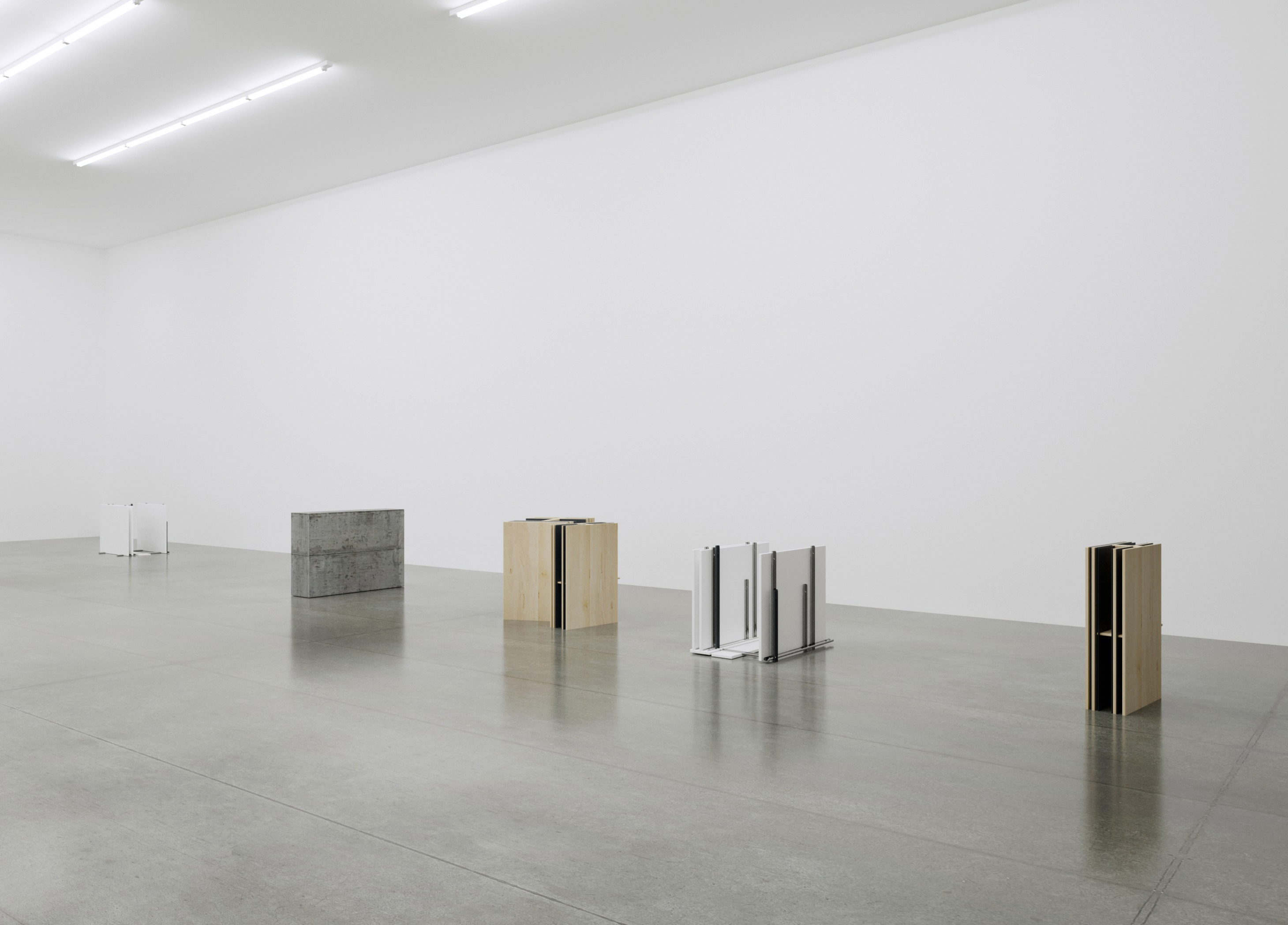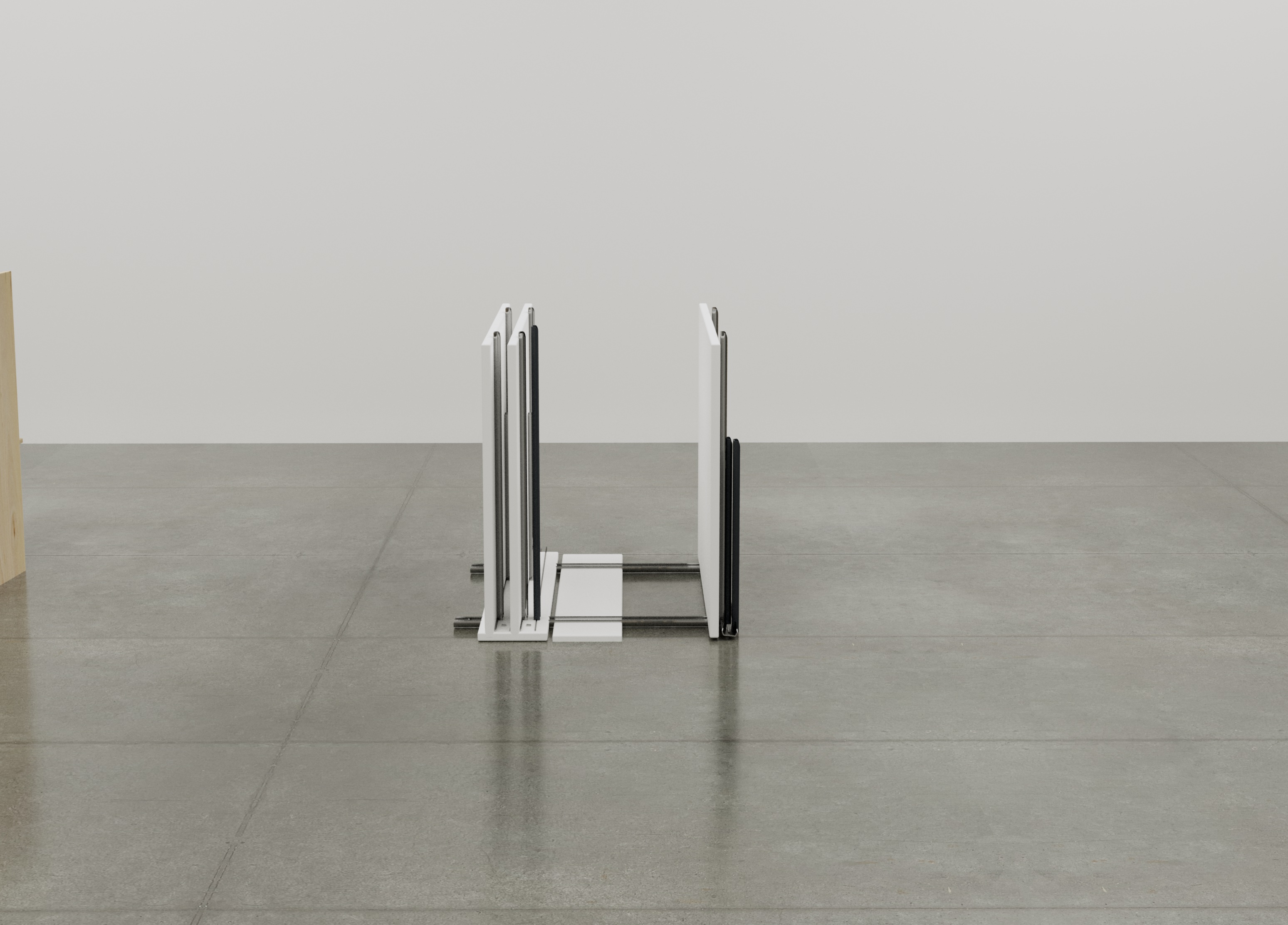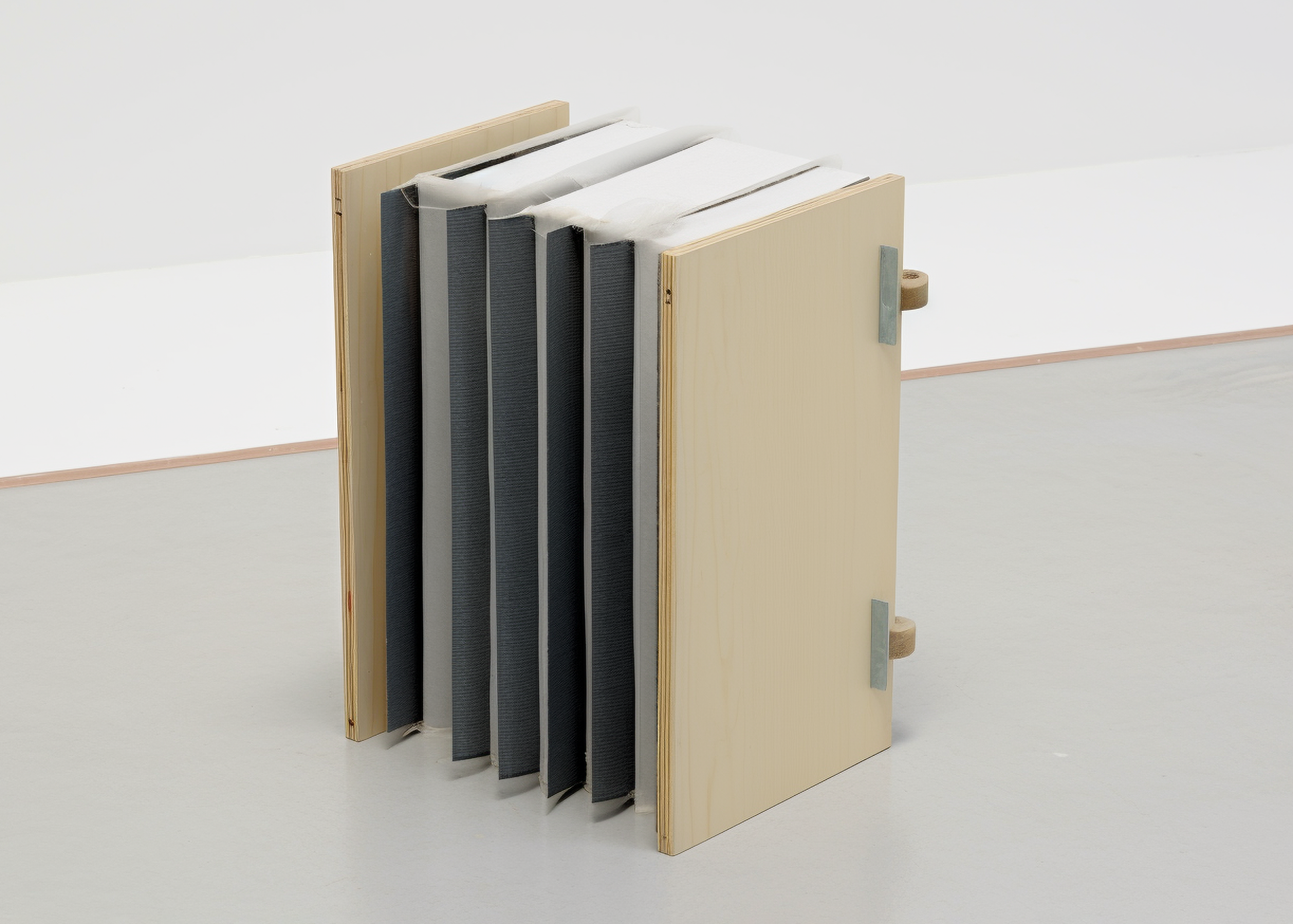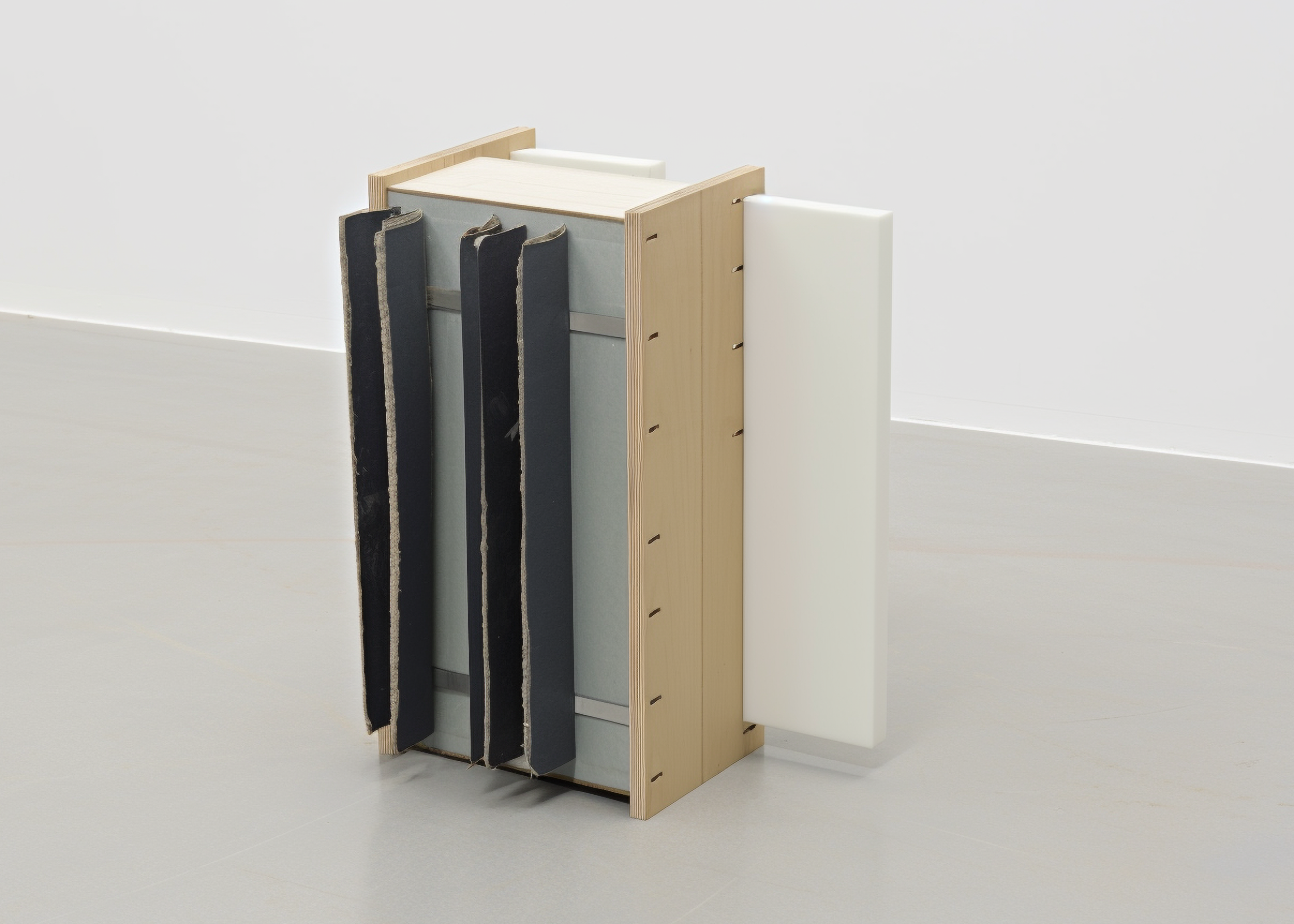FORM 15 - 2023
Marcin Zonenberg
Deconstruction
“As the world continued with its perpetual demand for product, for outcome, for definition, here some form of construction prevailed.
The sculpture became a commentary on the intrinsic value of the object and the weight of its existence.
As notes on the boundaries set by expectations, even though it still seems strange to us today that the object need not serve any purpose.
As dwelling in that uncertain margin between the idea and its realization, between form and its definition. Beyond action, in the ambiguous space of what could have happened.”
Any process of deconstruction is not a process of negation or destruction, but rather an attempt to understand and fragment an object or concept from various angles, often highlighting the ways in which elements that seem coherent or unified actually contain multiple meanings or contradictions.
Marcin’s „Dekonstruction” project addresses his interest and personal experience with architecture, particularly in Poland. The artist has spent the last few years observing housing dynamics in his country, focusing on
the effects of the political change that occurred in 1989 and on the difficulties that young Poles currently face in finding suitable housing during their study period.
Marcin’s works are created using furniture and construction materials.
The aim of his work is the deconstruction of familiar objects and artifacts, to which he gives new meaning through an abstract and unnatural juxtaposition of construction materials and common furnishing elements in everyday life. Each act of deconstruction for Marcin is, in effect, an act of discovery and, in some way, of visual regeneration.
The act of deconstruction is also common to various processes by which algorithms analyze and break down an image to form a new one, based on the same aesthetic and formal characteristics of the reference images. Through the use of AI, we have processed large amounts of facial material and photographs of Marcin’s work, deconstructing their structures to obtain new formal hybrids that directly refer to his research, while also delving into the complex layers of culture, identity, and the artist’s
personal experience.
in dialogue with Marcin Zonenberg:
1. Marcin, can you elaborate on how the political changes in Poland since 1989 have influenced your perspective on architecture and housing?
In the 1990s, there was a problem with the availability of cheap apartments after the political transformation. Many Poles had to take out loans to pay off their properties. The situation was not easy to be able to call an apartment a real safe home. Currently, there are further housing problems among students. It is difficult to find a separate apartment or a spacious room. Students share it with 8-10 people, living in rooms up to 8 square meters in size. These data and observations indicated that it was worth taking a closer look at this phenomenon.
2. You use both furniture and construction materials in your work. How do you choose these materials and what significance do they hold in the context of your project “Dekonstruction”?
While living in various apartments in Poland, I noticed how they are constructed and deformed in order to obtain. Building and construction materials are a certain basis thanks to which the building is created. Furniture also creates living space. Renters often take matters into their own hands by constructing living spaces that deviate from the norm. My works include materials such as: styrodur, fabrics, wood, concrete, and metal. I mix them and give them new abstract meanings by juxtaposing them in forms resembling segments, layers of partition walls, substrates, etc.
3. Your work focuses on deconstruction as a method of discovery and visual regeneration. Can you provide an example of an object or concept you’ve deconstructed and what you discovered through that process?
I was motivated to work on deconstructing the material by my BEKVAM stool from the IKEA series. I noticed its versatility in use. I used it as a chair, a small ladder, a table for tea and breakfast. The multifunctionality of this piece of furniture inspired me to change the context of the stool’s components. I bought several of these items. I chose elements that interested me and started to see how these things would work visually with building elements. The search turned out to be very fruitful.
4. How do you view the relationship between the act of deconstruction in your art and the algorithms that deconstruct images? Are there similarities or contrasts that stand out to you?
The work is similar. AI has broken the pattern of creating lean and conservative work. Current objects are more visually advanced and convey more information by mixing materials and adding multi-layered meanings.
5. Could you talk about the difficulties that young Poles are facing in finding suitable housing, and how this issue is represented in your work?
Currently in Poland, it is very difficult to find your own place to live. Rooms of 8-10 square meters are rented at very high rates in large cities. They are not good for anything other than going to bed. It is then necessary to organize and assign multifunctional properties to specific pieces of furniture. Hence, a sheet appears between the wooden walls of one of the objects, which shouldn’t be there. Objects resembling shelves become walls, countertops become partition walls. Everything interpenetrates each other and has no place.
6. Can you share an instance where your work led to an unexpected or surprising new meaning for you?
I think that the very beginning of the work was a great search, I wasn’t sure in what direction and what narrative the whole project would go. After the first analyzes of materials and form, I chose one of several conscious paths to visualize the topic.
7. How has the use of AI in deconstructing and analyzing material and photographs added a new dimension to this project?
I think AI provides more freedom to test and interact with the substance to ensure accurate narrative between works.
8. Your project delves into complex layers of culture, identity, and personal experience. Can you give an example of how these layers manifest in a specific piece from your “Dekonstruction” project?
In use, I served as the main header for white countertops, IKEA shelves. The signal is a very advanced piece of furniture from this company. Since moving to college, I have been designing the interiors of my apartment and student room. This is something you can use on your own. I can construct furniture myself, deconstruct it based on its meaning and purpose of use under my own law. I work similarly in my project. Students in Poland do not have much financial resources. Owners experience inflation problems as often as possible. Increasing rental prices reduces restrictions on violations of housing law. In principle, it is not possible to open a flat at a good price in the center of Crakow or Warsaw, which has not been previously deconstructed and deformed by the owner.
15
![]()
![]()
![]()
![]()
![]()
![]()
![]()
![]()
![]()
![]()
![]()
![]()
![]()
![]()
![]()
![]()















